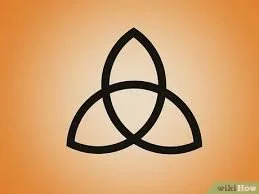THREE CONTEXTS OF PRACTICE
I was thinking about the context of my spiritual practice. I think of three contexts for practice.
Daily Practice
Immersive Practice
Intermittent Communal Practice
Let me give you some examples of each. Of course, the categories are not absolute and are not necessarily mutually exclusive. But the distinctions point towards what we how we might benefit from each context.
Daily practice is about two things, in my mind. One is to consolidate the leaps forward we have hopefully made in immersive practice. Many of us have certainly had the experience of being on a retreat and having some mind blowing experiences. We feel totally transformed, ready for radical change in our lives. Then we go home, and everyone is the same as they were before. You were seeing the divine, and they were doing laundry. How do you keep alive that mind blowing experience you had? That’s one purpose of daily practice—keeping it alive.
A second purpose of daily practice is to gradually deepen or sink into what you’ve learned and/or who you have become. It’s probably not going to be some radical jump forward, but I’ve had a daily prayer practice outdoors that is usually done in the same place for the last 7 years or so (the benefits of covid and retirement—before that when I travelled for work, it was every day I wasn’t travelling). My relationship with the trees, the grasses, the squirrels and birds of the little woods behind my house is much deeper than it was when I first started.
Immersive practice is about the leaps forward that we all need to take at certain points in our lives. If you are like me, it is really hard to go deep if after half an hour it’s back to making breakfast, answering emails, doing spreadsheets. But take me away from all of that, create a context in which my daily responsibilities fall away, and it is easier. There’s no guarantees of course—I’ve been to enough retreats where I had a good time but no transformative experiences—but it certainly is easier and more possible.
By Intermittent Communal Practice I have in mind things like a Shabbat service, Passover Seder, new moon ritual. I’m a little unclear whether something like a weekly class over zoom counts, but I would count a weekly in person class. The distinction here is that part of what we are doing with Intermittent Communal Practice is building a community of fellow seekers and practitioners. The community is important because we humans are social animals who need each other for support and encouragement in our spiritual journeys. It is really important to not feel alone—to the extent we feel alone, that is an obstacle. Intermittent Communal Practice also has the same two aspects of daily practice in that it should serve to consolidate transformations coming out of immersive practice as well as gradually deepening what we’ve learned, who we’ve become.
The categories aren’t hard and fast. For instance, if you go to a daily minyan for morning prayers that’s both a daily practice and a communal practice, since I would assume that you make some connection with the other people. You could also have a communal practice that looked like an immersive experience if your community gathered together for a deep weekend every month, or something like this. Immersive practices often aren’t done totally alone, but the community tends to be more transient than the intermittent community. But I like to think about practice in these three buckets because it helps frame what is working for me and what is not.
My daily practice is strong and given that I am more comfortable with plodding away on a steady basis with incremental improvement as a goal, that’s a good thing. When I didn’t have a daily practice, it was a huge missing in my life, without me realizing it. One of the worst parts of moving away from the farm I stewarded was, in retrospect, losing that daily practice of moving the cows to a new pasture, putting up a new fence and making sure I knew what the next few days for them were going to be like. It was my prayer to the land and to the cows, a sacred obligation fulfilled.
On the other hand, both my immersive and intermittent communal practice are not where I would want them to be. I’d like a deep immersive practice built around the three pilgrimage holidays. Passover as a time of liberation, Shavuot as a time of visions and Sukkot as a celebration of community and the bountifulness with which we have been blessed. Or whatever comes up—Sukkot in 2023/5784 I had a vision of an old man struggling to walk on the walls of Jerusalem, doing a final lap around a well known path, filled with pain and love and wonder.
For my intermittent community practice, I think it is not enough to just plug into existing Jewish structures; I long for something deeper. I don’t know what that looks like; it is part of my exploration.
